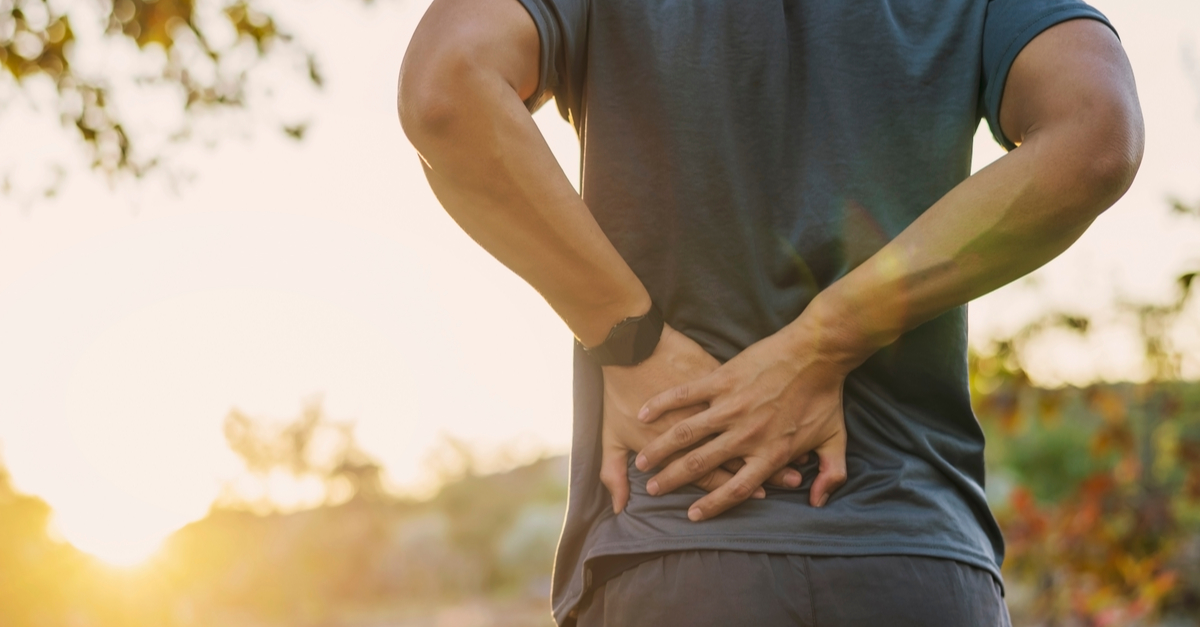
04 Nov Do you have a “Posture of Fear”?
In my last article, I discussed whether or not bad posture caused pain. The answer was nope, not really. I also said I would get more into a couple of the concepts of how our posture is formed and how our bodies support themselves and, in this piece, I will keep that promise.
I wrote previously about how gravity was a big factor in how the different parts of us look, such as having the head out in front or the low back with a lot of curve. Now it is time to expand more on what the skeleton does related to posture and the influence of the soft tissues.
Now, imagine the body not so much like you have seen it in anatomy charts at your doctor or therapist’s office, but more like a bubble. Instead of all the muscles and bones being nicely compartmentalized in their own places and working separately pushing and pulling etc. imagine the skeleton floating inside this bubble of different but combined tissues, with everything being connected with an interplay that holds us up, and moves us with constantly changing fluid pressures that defy gravity. With this idea, a more common-sense approach to our basic anatomy and function can be seen. This “bubble” however, is very sensitive and obedient to one thing, stress.
There is a part of our nervous system called the Autonomic Nervous System (ANS) that controls important functions of our bodies systems without us having to think about it, like breathing. The ANS though, is highly influenced by our emotional state. If we are in the fight or flight setting, also known as the sympathetic state, our nervous system is only interested in protecting us from harm. This setting is very old and very basic in living things and is important in survival. Unfortunately, many of us live in this state due to all the difficulties of life. Some of the many signs of this are hypertension, stomach issues, unclear or irrational thinking, and the one that applies directly to our posture and appearance is what I like to call “armadillo mode”. This is where in order to make us a small target, our body contracts strongly in the front areas especially in the abdomen, chest, and where our legs meet the front of our pelvis. Although the intent of this curled form is to protect our organs, the related contractions pull us forward, down, and compress our “bubble” creating large amounts of pressure internally, and making us more vulnerable to the pull of gravity as our bodies center of weight changes more towards the head and chest increasing how heavy we feel. If you remember, in the article about posture relating to pain, I talked about how keeping our head and eyes up to observe our environment is very high on the list for what our nervous systems pays attention to. Well this does not change during the fight or flight state, in fact it becomes an even higher priority because our sensitivities are increased.
During armadillo mode, the tissues of the abdomen and pelvis have the strongest contraction because that is our most vulnerable area. When the body tries to lift up the head, its not just gravity pulling it back down, it is all the tight tissues of the abdomen (everything is connected) that are trying to pull the head back down to protect it. This creates a battle between our primal functions where one interest of the body is doing everything it can to hide, but at the same time it is trying to observe its environment for more threats. Because the protective contractions of the body severely limit our ability to stand up straight, the body ends up compromising its healthy alignment by exaggerating certain bends and angles as seen in the posture chart I have provided. And now let’s add the desk and cell phone positions that dominate our culture and it becomes a day-in day-out struggle. Our life basically becomes a game of back and forth as the body shapes and reshapes itself to maintain on its feet with the head and eyes elevated. The “bad posture” that results may look like an issue with the spine and skeleton, but in reality, it is all about what the tissues are doing to the position of the bones floating within. And yes, that includes scoliosis, because bones do not decide to move and create shapes, they are mobilized by the soft tissues and many times, that is really based on fear whether we are aware or not. A perfect example we have all seen is an elderly person hunched over and maybe using a cane to get around. Usually this is explained by saying they have osteoporosis or weak bones, but if you were to get to know these people like I have over the years in my practice, you will more than likely be told about some very difficult and traumatic experiences. It is these experiences and the resulting protective contractions of their abdomen and pelvis that created the shape you see in them. If posture could only tell stories…


Sorry, the comment form is closed at this time.